JOURNEYS OF
DISCOVERY
"On 28 November 1967, it came again, a string of pulses one-and-a third seconds apart."
This was not the work of Little Green Men. Jocelyn Bell had discovered pulsars.
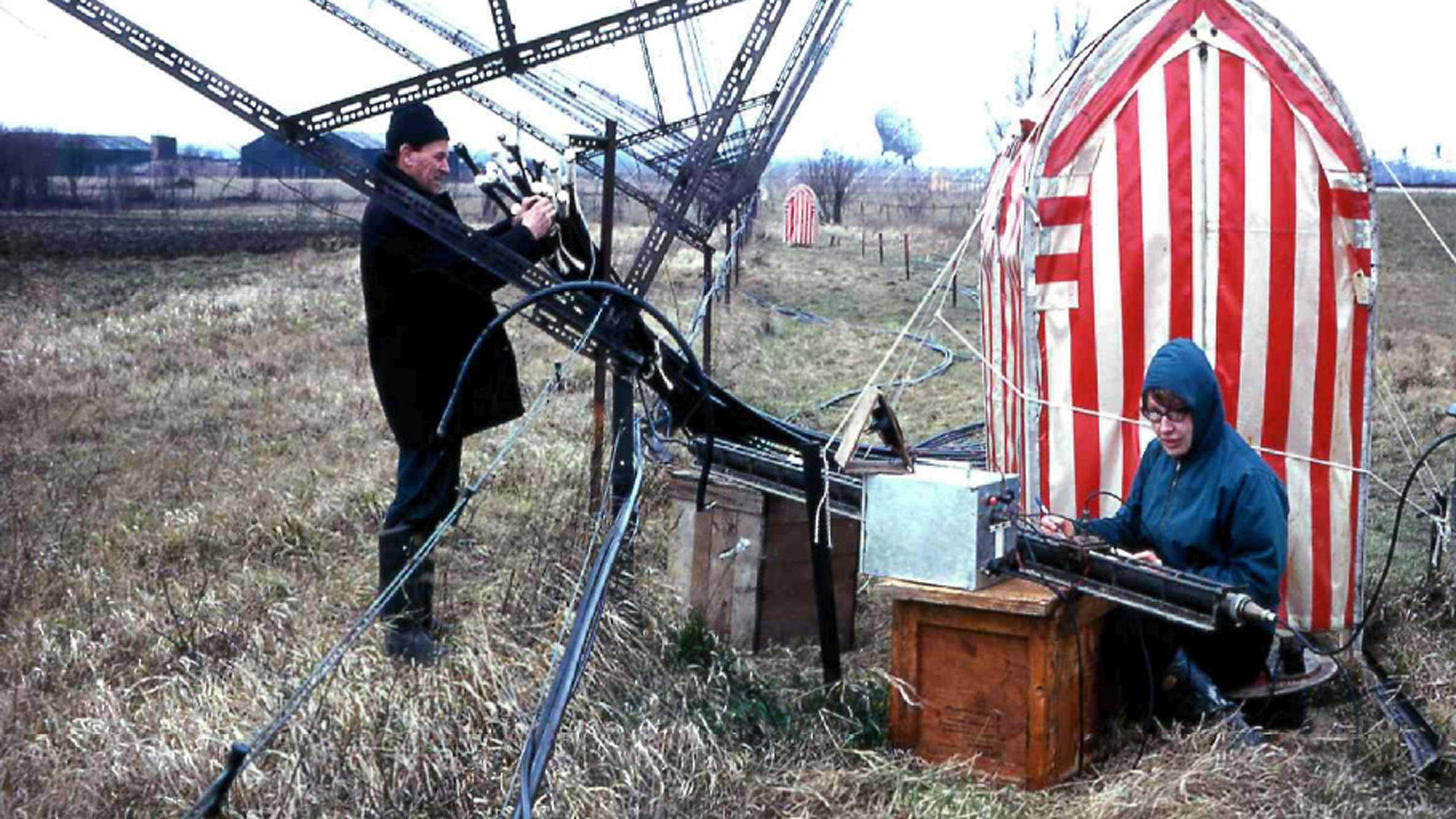
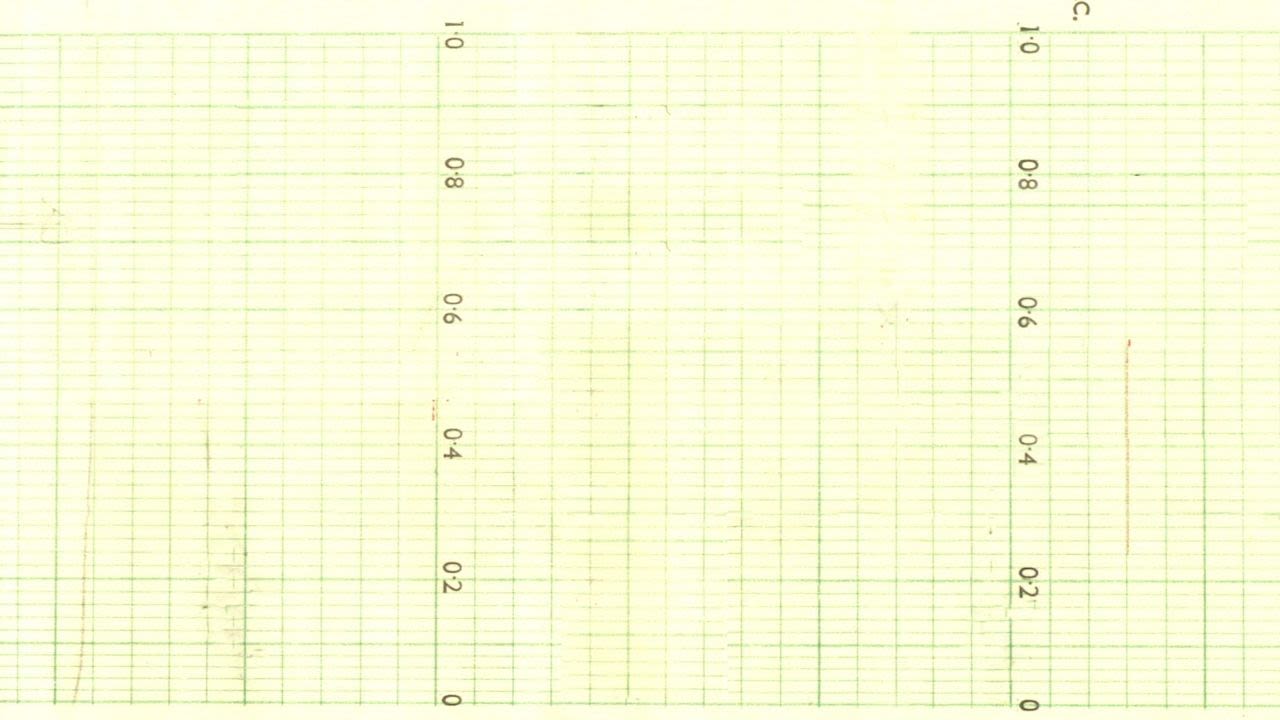
Sitting in a field strung with 120 miles of radio telescope antennae, 24-year old PhD student Jocelyn Bell couldn’t shake the feeling that she’d seen something before.
The year was 1967. For two years, Jocelyn had helped solder and sledgehammer the antennae into place at the Mullard Radio Astronomy Observatory just outside Cambridge.
As she pored over her rolls of chart recordings, she noticed it again: a "one part in 10 million" squiggle on a line.
She had discovered a previously unknown object in the universe called pulsars.
The work resulted in a Nobel Prize (but not to her), inspired the artwork on a Joy Division album cover*, and in 2018 led her to donate all of a £2.3 million prize to help under-represented groups become physicists.
We talk to Jocelyn about her journey of discovery.
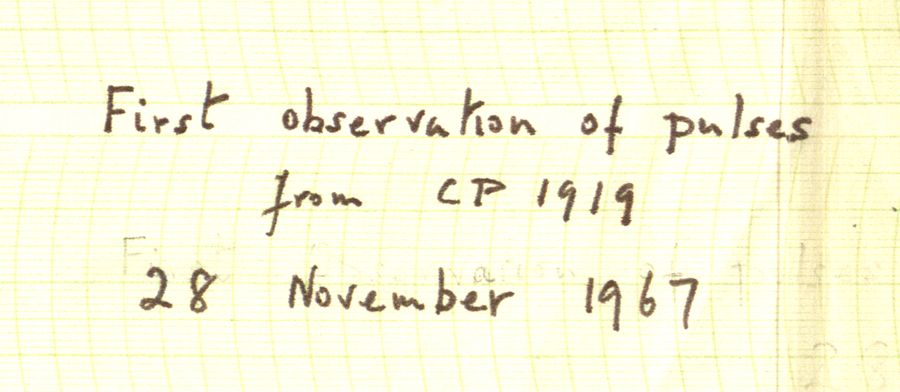
Sections of the telescope still exist at the Mullard Radio Astronomy Observatory outside Cambridge. What was it like to build?
JBB: It looked like an agricultural frame, something you might grow peas up – a lot of wires and cables strung from posts over a space the size of 57 tennis courts. It was actually built to study radio emission from quasars. I built the prototype and then six of us took two years to build the real thing. It was unglamorous but it functioned very nicely and switched on the first time I used it.
In the space of two months, you discovered the first four pulsars; 3,000 are known today. Why are pulsars interesting?
JBB: They’re extremely small, about ten miles across, and very dense because they’re formed when stars of a certain size catastrophically explode. If you jammed the population of the globe into a sewing thimble, it would weigh the same as if it was full of pulsar material.
Pulsars are visible because they swing a beam of radiowaves around the sky, a bit like a lighthouse, and when that beam shines at a radio telescope, you pick up a very accurate pulse, pulse, pulse, pulse – like ‘clocks’ dotted throughout the galaxy.
They have a lot of extreme physics going on inside them and scientists use them to test theories of relativity on a cosmic scale. Einstein’s theories are checking out pretty well so far.
How would you describe yourself as a 24-year-old PhD student?
JBB: I was very, very thorough, making sure I really understood how that telescope worked, and that it was working properly. I was quite convinced that I wasn’t clever enough to be in Cambridge and would be thrown out at some stage. My policy was to work as hard as I could so that I’d know I’d done my best. We now label this as impostor syndrome, but we didn't recognise, and certainly didn’t name it, back then.
You famously used the letters LGM to label your charts. Tell us about the Little Green Men.
JBB: Radio telescopes pick up human-generated interference: arc welders, sparking thermostats, badly suppressed cars. I had to identify this interference and got quite used to recognising features on the chart. Occasionally there would be something I didn’t recognise and I’d record it with a question mark or, as a joke, LGM for Little Green Men. It was easier than saying “you know that funny pulsing source at right ascension 1919, declination plus 20”. So, it became LGM.
How did this turn into discovering the first pulsar, which you later named CP1919 (Cambridge pulsar at 19 hours 19 minutes right ascension)?
JBB: From one particular piece of the sky an unclassifiable signal sometimes recurred and my brain started to say: “You’ve seen something like this before, haven’t you? You’ve seen something like this before from this bit of the sky, haven’t you?”
I got out previous recordings from that bit of sky. It often wasn’t there, but when it was, it was keeping its place amongst the stars.
I talked to my supervisor, Professor Tony Hewish, and he pointed out that it was only occupying a quarter inch of space on the charts – about one part in 10 million of all the charts I had. He suggested I switch to a better, faster recorder. For a month it recorded nothing, and then one day, on 28 November 1967, it came again, a string of pulses one-and-a third seconds apart.
Tony was cautious. He suspected I’d wired the radio telescope up wrong. So we checked on another radio telescope on the site. The thing was pulsing nicely on mine but as we stood by the pen recorder of this other telescope, nothing happened. It was a horrible moment. And suddenly there it was, five minutes later because we had miscalculated when the telescope would see it. If we’d miscalculated by 25 minutes, we’d have all gone home and the story would be different.
Images: the first detection of radio signals from CP1919 was on 6 August 1967, although the pulsed nature was not suspected at this time. The first observation of pulses was on 28 November 1967. Images courtesy of Churchill Archives Centre, HWSH Acc 355.
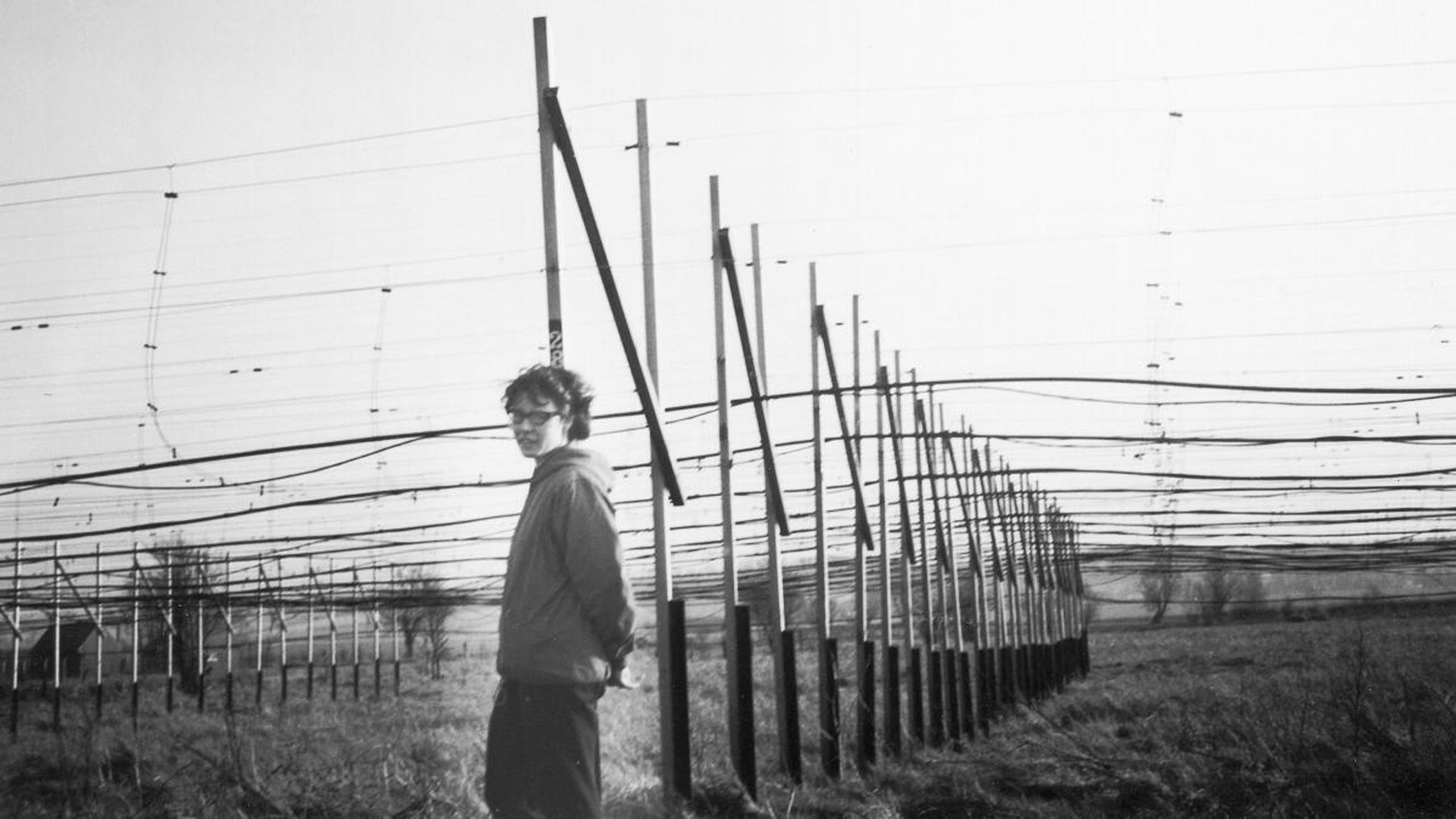
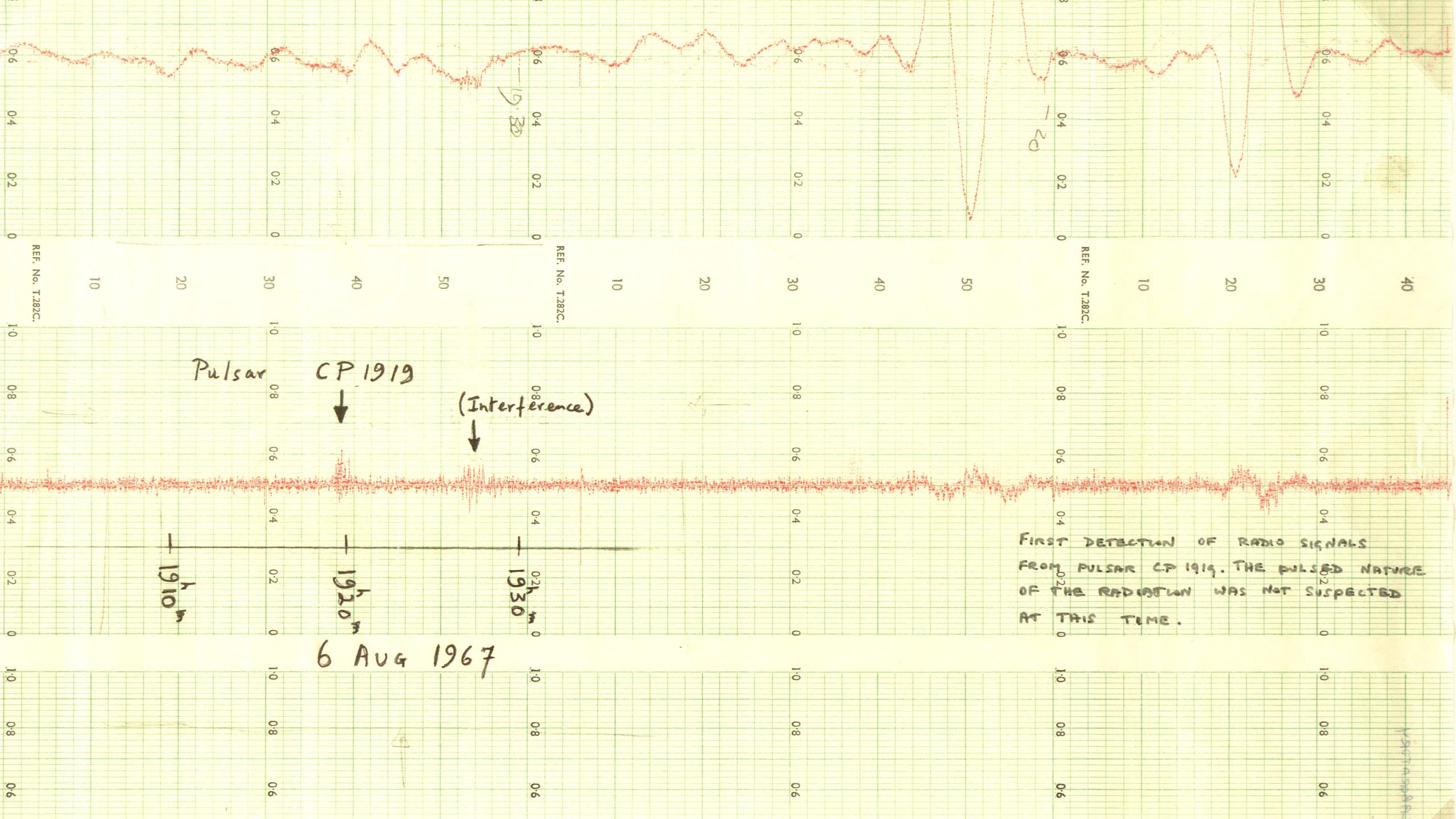
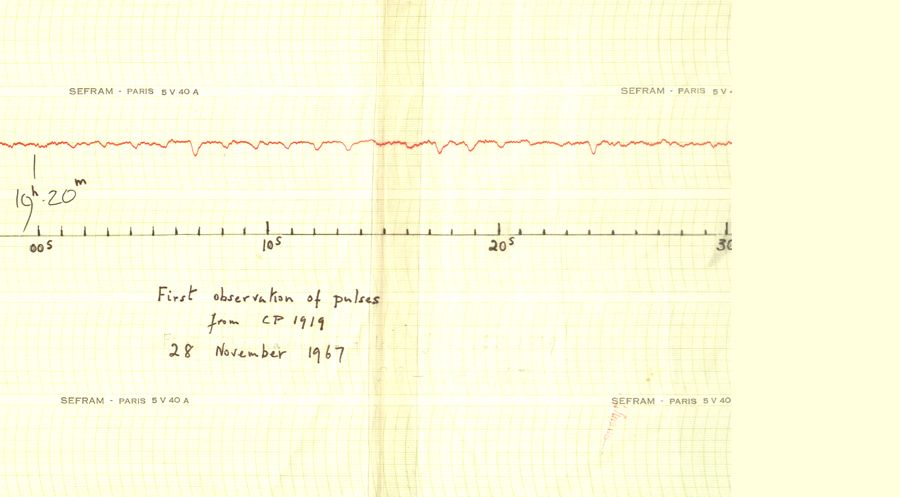
The Nobel Prize for Physics was awarded for the discovery of pulsars to Antony Hewish and Martin Ryle in 1974. How did you feel?
JBB: My contemporaries were more upset about the Nobel than I was not to be recognised. One of them labelled it the ‘No-Bell’ prize! But it was fine by me. There’s no Nobel Prize in astronomy and I was really proud that it was my stars that had convinced the prize committee that there was good physics in astrophysics.
You then went on to win the Special Breakthrough Prize in Fundamental Physics in 2018. What did you do with the £2.3 million prize?
JBB: Yes, in 2018, I was awarded the Breakthrough Prize for the discovery. I was a bit dumbstruck, never expecting that kind of thing to happen. I was keen that the money should be used well and the best way to do that seemed to be to encourage a more diverse research student population from under-represented groups. The Breakthrough Prize money is now being administered by the Institute of Physics as the Bell Burnell Graduate Scholarship Fund and this year will fund four postgraduate students in physics in the UK.
Any last thoughts on the discovery?
JBB: The next generation of telescopes will see millions of events per night with computers that sift through huge amounts of data. If we had had access to a computer, we would never have programmed it to look for something so unexpected. How do you pick up the things you don’t know exist, the things you can’t tell it to look for? My project was to study quasars, and then we accidentally stumble over these things called pulsars. They were totally unexpected, totally unknown – and it’s been huge fun.
Professor Dame Jocelyn Bell Burnell discovered pulsars in 1967 while she was a postgraduate student at New Hall (now Murray Edwards College) carrying out research at Cambridge's Cavendish Laboratory with Antony Hewish. In 2018, she was awarded the Special Breakthrough Prize in Fundamental Physics for 'fundamental contributions to the discovery of pulsars, and a lifetime of inspiring leadership in the scientific community'. She is now a visiting academic at Mansfield College, University of Oxford.
*And that Joy Division album cover?
Former Factory Records graphic designer Peter Saville designed Joy Division's Unknown Pleasures album cover after seeing a stacked plot of radio signals from a pulsar in The Cambridge Encyclopaedia of Astronomy.
But where did the stacked plot come from? In 2015, Scientific American's senior graphics editor Jen Christiansen traced it back to the work in 1970 of PhD student Harold D Craft Jr at the Arecibo Radio Observatory, Puerto Rico. After hearing of Jocelyn's discovery of CP1919, Harold had decided to plot it 80 successive times – and an iconic image was born.
Watch Peter Saville talk about designing the album cover:
Animation and cinematography: Jonny Settle
Interview and design: Louise Walsh
Banner image: Jocelyn Bell working at the Mullard Radio Astronomy Observatory (MRAO) in Cambridge in 1967, courtesy of MRAO.
The text in this work is licensed under a Creative Commons Attribution 4.0 International License.

... visit our interactive map to find out how.

